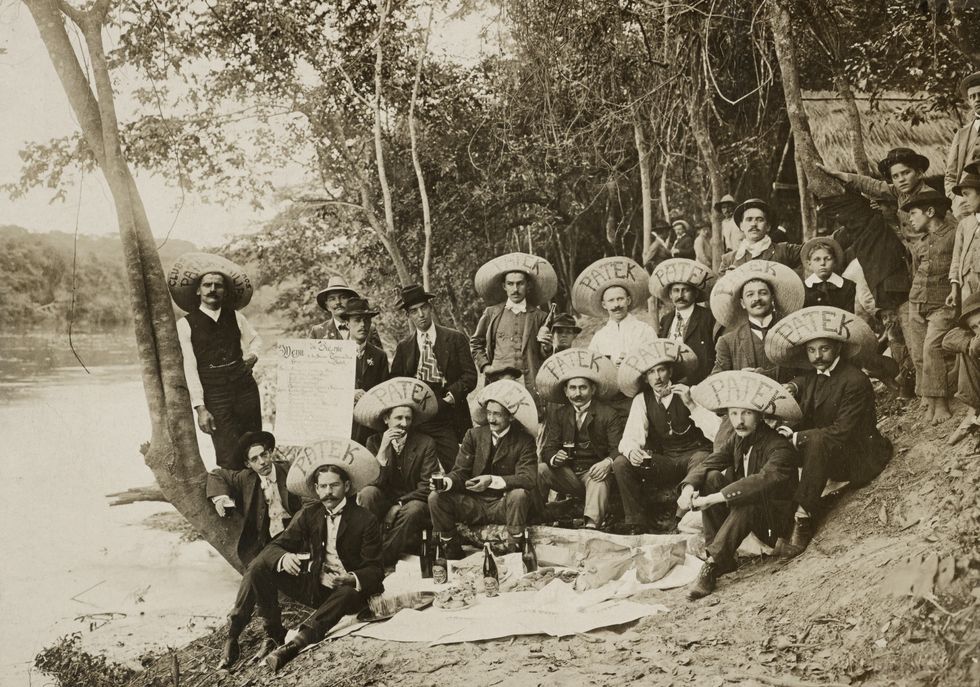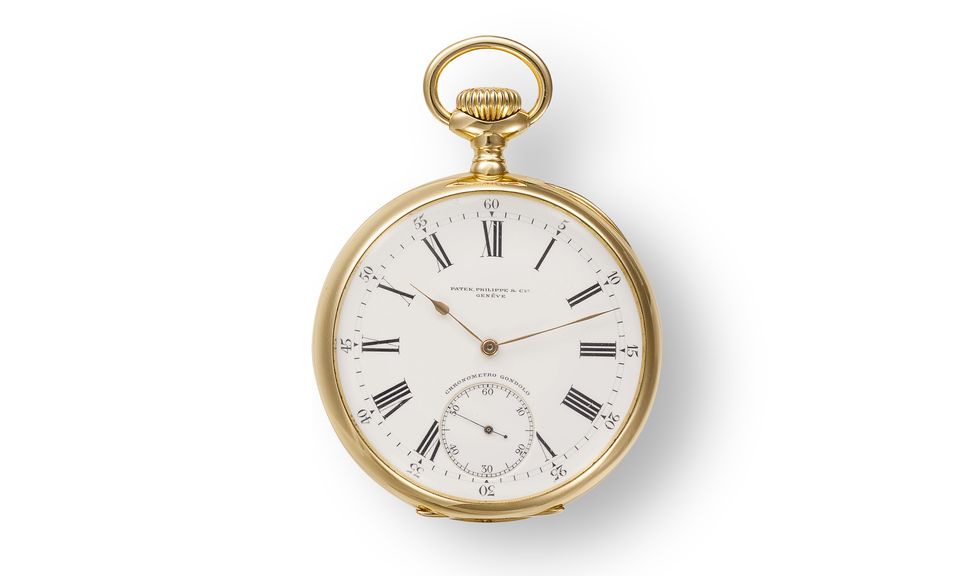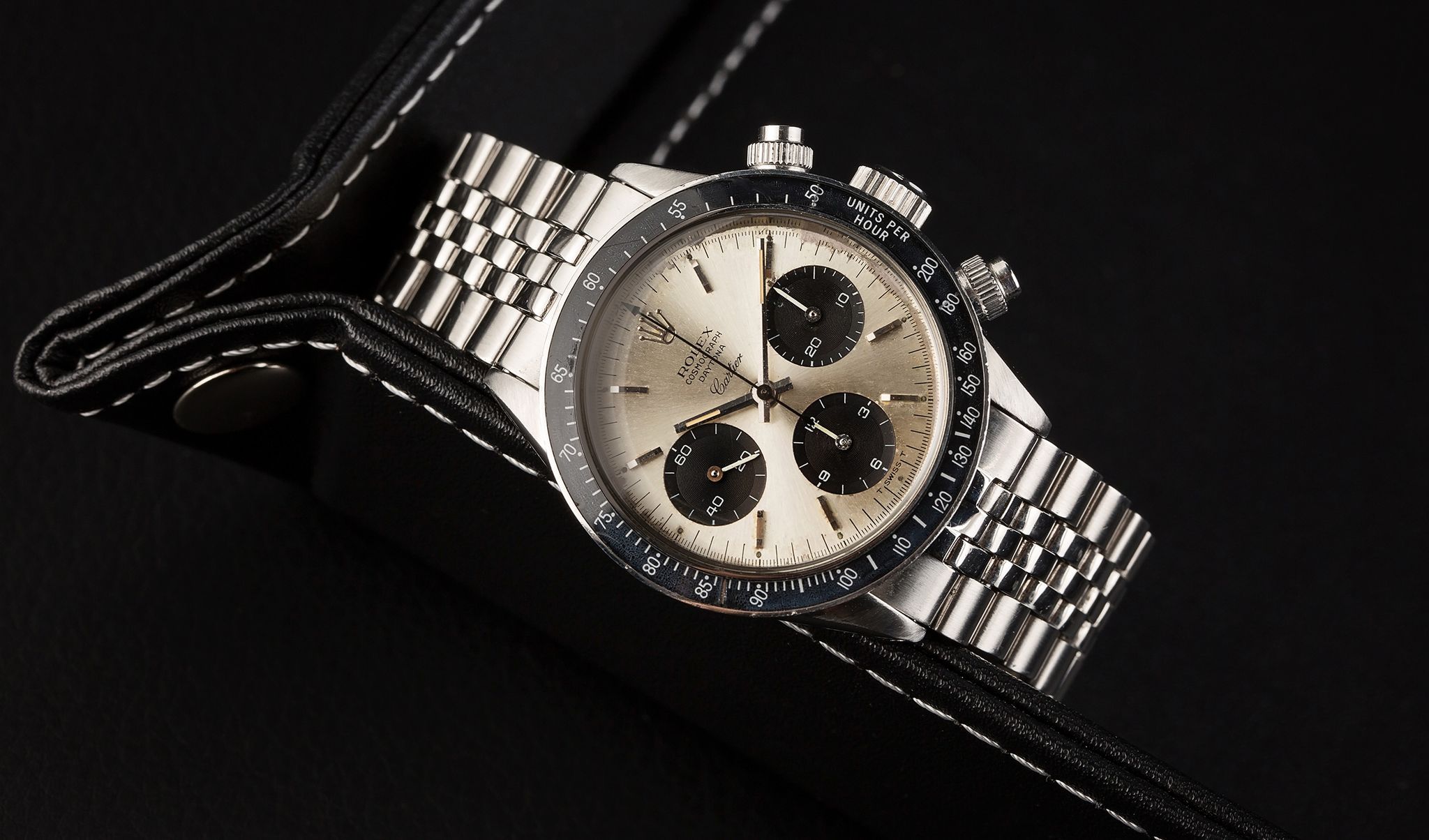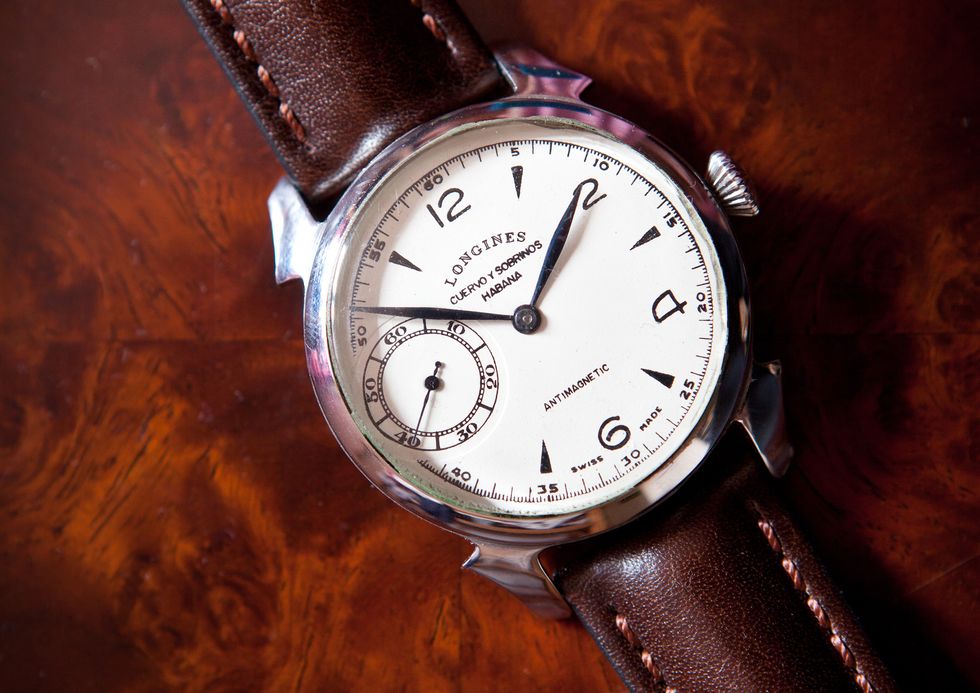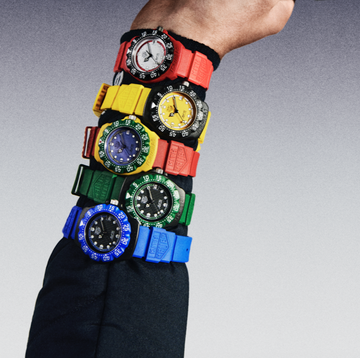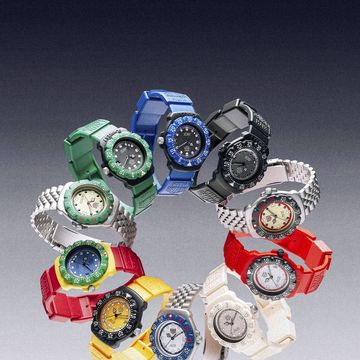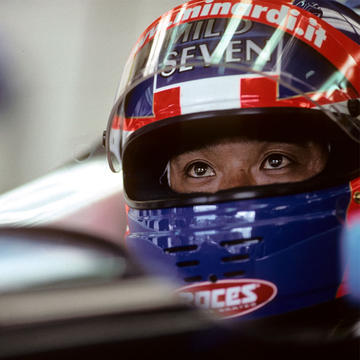In November last year, Lot 131, a Patek Philippe 5711/A Nautilus, sold for CHF125,000 (£100,000) at Phillips’ annual watch sale in Geneva. The watch was essentially new, having first been sold just three months earlier on 30 July, not having had any time to accumulate anything in the way of provenance; no movie star affiliation, no convoluted backstory. What commanded that enormous premium — the Nautilus should retail in the UK for a shade under £25,000 — was the Tiffany & Co stamp on that example’s dial.
What that signifies (apart from someone having been hurriedly struck off Tiffany’s preferred customer list for perpetrating the mother of all flips) is how in-demand double-signed dials currently are, although this phenomenon would admittedly be more clearly illustrated were this sale not also compounded by the meteoric rise of Nautilus prices.
“There’s always been a desire for vintage watches having a double-signed dial, at least in the last 15 or 20 years,” says Phillips Geneva’s head of sale, Alex Ghotbi. “The reason being a double-signed dial adds an element of rarity to an already rare vintage piece, it brings difference. It’s true that in the past few years we’ve seen the prices of a lot of these double-signed watches rocket skywards, but that’s also a general trend for vintage watches. We are seeing an increasing demand for vintage watches and obviously those that have the means and the knowledge, they are ready to pay more to have something that is even more distinctive and rare.”
Tiffany & Co still sells Patek Philippe at four of its American outlets as part of a partnership that began with Antoine Patek in 1847, and it is because of the duration of this long-standing partnership that Tiffany & Co is the only retailer still granted permission to co-sign the dials of a Patek Philippe watch. This arrangement might now be the exception to the rule but in decades past many jewellers selling watches, or indeed pocket watches, would seek to print their company name on the dial as well, a practice which seems to have its origins in the mid-19th century when watch manufacturers were looking to gain a foothold in the nascent, yet potentially huge, US market.
“Retailers up until very recently, when brands decided they wanted to have their own shops, were the go-to people, the representatives of the brands,” Ghotbi continues. “They were the ones who had access to the clients, they were the ones who knew the market and for the brands, their clients were always the retailers.”
Today, branding is much more jealously guarded by watch manufacturers and the idea of contemporary double-signed dials is unthinkable for most bigger brands (however, Laurent Ferrier has provided its London retailer William & Son with signed dials as recently as 2016). Commercially important retailers still ask for preferential treatment, but today that is by way of exclusive references, a more elaborate solution but one that neatly side-steps the co-branding issue (or at least moves it to the caseback). See the various Harrods limited editions and Bucherer's highly successful Bucherer Blue series, both of which play on the retailer's signature colour rather than their name.
Almost as old as the Tiffany partnership was Patek’s relationship with Brazilian jeweller Gondolo & Labouriau that began in 1872 with the sale of a single 18-ligne silver pocket watch and ran until 1927. The country’s affluent middle classes, enriched by an export economy that was the envy of Latin America, were keen to announce their success in society with conspicuous displays of wealth, buying so many Patek Philippe watches that “Patek” entered the local vernacular as a direct replacement for watch. Membership of the retailer’s groundbreaking collector’s club, “The Gondolo Gang”, was taken as a genuine social marker. During the 55-year partnership, sales through Gondolo & Labouriau accounted for one-third of Patek Philippe’s entire production.
The 180-strong “Gondolo Gang” were Gondolo & Labouriau’s most ardent Patek Philippe customers who attended the world’s first “watch meets” wearing straw sombreros emblazoned with the word “Patek”. The Brazilian retailer was also an audacious marketeer establishing the “Plano do Club Patek Philippe System”, a payment plan enhanced with an incredibly generous lottery. Customers would agree to pay a total of CHF790 (roughly equivalent to the annual salary of a qualified worker in Brazil at the time) for a watch over 79 weeks, at CHF10 per week. However, each week a prize draw was held where one lucky member would have the outstanding balance on their watch cancelled — the first winner receiving their watch for free, the second only paying CHF10, the third CHF20, until the final winner, who’d have paid CHF780. As the Gondolo Gang was considered a private club, it neatly circumvented Brazil’s ban on public gambling.
Given the retailer’s importance to the brand it eventually expected more than simply double-signed dials, and from 1902 required an exacting specification that set its pocket watches apart from pieces available elsewhere. Each “Chronometro Gondolo” boasted gilded-brass mainplates, S-shaped fourth-wheel spokes, square socket mainspring barrels and a Swiss “moustache” escapement with bimetallic balance while fourth, intermediate and minute wheels were made of nine-carat rose gold, and as such it perhaps has more in common with the exclusive designs made for retailers today. Chronometro Gondolo wristwatches with the same specification would appear in 1910 in square-, rectangular-, cushion- and tonneau-shaped cases.
Rolex, too, figures highly in the discussion of such watches, having developed one of the widest global networks of co-branding agreements with retailers, from Van Cleef & Arpels (signed VC&A) in Paris to Dobbies in Nairobi. Its own deal with Tiffany & Co came to a rather abrupt end in the Nineties when Rolex is said to have ceased supply of such dials. Tiffany is believed to have responded by pulling Rolex from its shelves for good.
But the most sought-after double-signed Rolexes — perhaps the most sought-after double-signed watches full stop — share their dials with the Cartier name, something which is unlikely to have happened were Cartier’s own company history not quite so ungainly.
The established wisdom suggests that, for a brief period of time in the Seventies, Rolex watches were stocked at Cartier New York’s Fifth Avenue boutique. If that sounds unlikely, it’s worth remembering that in the Seventies, the London, New York and Paris offices of Cartier were entirely separate businesses — the brand having originally been fractured by WWII — and the owner of the US business, Robert Kenmore, took liberties with the brand that would never be accepted today, such as using the premises to sell fur coats made by one of the other companies he owned. However, Paul Altieri, founder of California-based Rolex specialist Bob’s Watches believes this “brief window” actually extends way back to the early Fifties, citing a 1956 Cartier-signed Ref 6484 sold at Christie’s Geneva in May 2015.
According to Ghotbi, the practice of both brand and retailer signing watch dials waned in the Eighties before disappearing in the Nineties.
“Maybe it was just a question of taste. Even then in the Forties and Fifties, when we saw a lot of retailer-stamped dials, it wasn’t something common. Brands had these signed dials just for their best and most prestigious retailers.”
Such dials offer a fascinating insight into the watch-buying habits of days past. Some, such as Gobbi 1842 (in Milan), Gübelin (Geneva), and Hausmann & Co (Rome), have flourished and continue to sell watches and jewellery, while for others the story is more complicated.
How about Linz Brothers, the retailer represented by four letters emblazoned on certain dials with an enigmatic, backwards “N”? The Linz family moved its business to Dallas, Texas, in 1891, becoming the city’s premier watch retailer and jeweller. The business changed hands twice in the Eighties, before closing down in the Nineties.
Havana-based Cuervo y Sobrinos, meanwhile, not only sold fine Swiss watches but had established its own manufacturing facilities in Germany and Paris as early as the Twenties before opening workshops in La Chaux-de-Fonds in the Thirties. While the Cuban Revolution shattered the company in 1959 — fellow Havana retailer and double-signed dial favourite Joyeria Riviera upped sticks to nearby Puerto Rico — it would return 40 years later in Switzerland, once again as a watch brand in its own right.
Double-signed dials not only offer a greater point of difference but they often double-up on the history as well, offering two stories rather than one, and in a field fascinated with history and storytelling that is compelling.
Phillips will present a thematic auction, Double Signed: a Celebration of the Finest Partnerships of Manufacturers and Retailers, in Geneva, Switzerland this November
Like this article? Sign up to our newsletter to get more articles like this delivered straight to your inbox.


